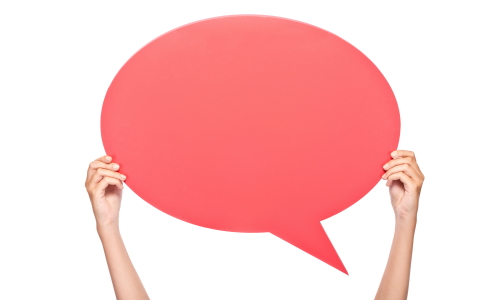How to write conversational copy
When Don Murray arrived in the newsroom for his first day on the job as writing coach for the Boston Globe, he turned to his new boss and said: “I can tell you who your three best writers are.”

Here’s how, according to Kim Flaherty, et al., authors of Marketing Email and Newsletter Design:
Then the Pulitzer Prize winner and author of Writing to Deadline: The Journalist at Work proceeded to do just that.
“How did you know?” the editor asked.
“Their lips move when they write,” Murray said.
Reading your message aloud — hearing your words instead of just staring at them — is one of the techniques that separates master writers from the might-have-beens.
Specifically, reading your writing aloud will help you:
1. Reduce errors.
Your eyes are such good editors, they can “fix” your message as they view it. Your ears will catch what your eyes miss.
Students taking remedial writing courses at the City University of New York, for instance, eliminated 60% of their grammatical errors by reading their message aloud, according to Richard Andersen, author of Writing That Works.
2. Make your message sound better.
Reading aloud can smooth out rough passages, reduce fits and starts, and otherwise make your message flow instead of stutter. It can help you find a voice and tone for your piece.
“Effective writing has the illusion of speech without its bad habits,” Murray writes. “The reader hears a writer speaking to a reader. The writing should flow with grace, pace and clarity — not the way we speak but, better than that, the way we should speak.”
3. Cut Through the Clutter.
When you read your message aloud, your tongue will trip over nine-syllable words; you’ll run out of breath before the ends of long sentences; you’ll stumble over redundancies, jargon and passive voice.
In short, you’ll find all the things you’ve been looking for — but missed — so far in your editing process.
Do you read your message aloud? If so, how does that help?
How long should your message be?
Would your message be twice as good if it were half as long?
Yes, the research says. The shorter your message, the more likely readers are to read it, understand it and make good decisions based on it.
 So how long is too long? What’s the right length for your piece? Your paragraphs? Your sentences? Your words?
So how long is too long? What’s the right length for your piece? Your paragraphs? Your sentences? Your words?
Find out at Rev Up Readability — our clear-writing workshop, which starts June 20.
There, you’ll use a cool (free!) tool to analyze your message for 27 readability metrics. You’ll leave with quantifiable targets, tips and techniques for measurably boosting readability.
Save up to $100 with our group discounts.
